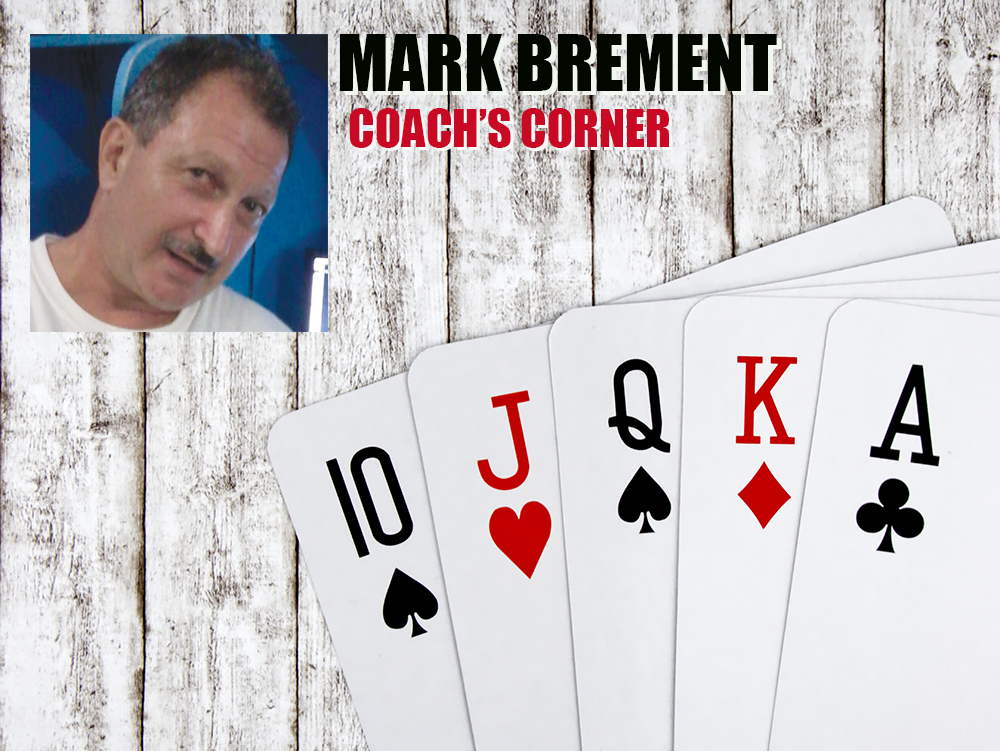Hall-of-Fame baseball player Mickey Mantle once said, “It’s unbelievable how much you don’t know about the game you’ve been playing all your life.”
Let’s not kid ourselves: Poker is a complex game and takes skill. At my poker class at Pima, I used to ask students what they thought the luck-vs.-skill ratio is. Typical answers were 60-40 or 75-25 skill-to-luck. My answer is it’s 100 percent a skill game. When players approach poker in this light, they perform better or at least make more money than opponents. Making money is how we keep score. Let’s look at a few tips to help us play better poker.
Recently I jumped on a poker simulator to go over some push-fold theory. I picked four to six players remaining in a nine-handed SNG that paid three spots.
HAND 1: I hold Q-7 suited on button with 1,800 chips. Four players remain, which is the bubble. I pushed. Wrong! Q-8 suited is the cutoff for a push, or push range is 23.4 percent.
HAND 2: Six players remain and I’m in small blind as it’s folded to me with10-3 offsuit. I push. Wrong again! Push range is 83 percent, which represents a ton of hands but does not make the grade.
HAND 3: Five players are left and I’m in the BB with 200 posted and only 650 left. The cutoff pushed and I instacalled. No-brainer, right? I only had 650 left. I thought I had a wide range. Wrong! The correct answer is the call range is 23 percent. Am I really this much out of practice?
HAND 4: Four players are left and I hold A-7 off with 910 chips (short stack). I pushed. Wrong! A-8 is the cutoff with a 26 percent push range.
Please, no emails making fun of me. Here’s the thing: As a serious player who believes he’s an “A” player, it is our business to know the correct play. Obviously when we know how opponents are playing we can make a few adjustments. But we must understand the boundaries. In most tournaments, players who win will tell you how at one point in the tournament they were under 10 big blinds. Knowing what to do is critical.
Let’s think about our $1-$2 game for a moment. Do you have an hourly-rate target? If you do, stop thinking in terms of your session. Think of your earn or loss in 100 hours of play. This will save you a lot of time and energy in giving your play a fair assessment. I think it’s safe to assume if you’re taking the time to read this column, you’re keeping accurate records. This is a must if we’re going to lop off your leaks and start hitting your goals.
— Mark Brement has spent 15 years teaching and coaching all facets of poker, including at Pima CC. Email him at brementmark@gmail.com.




